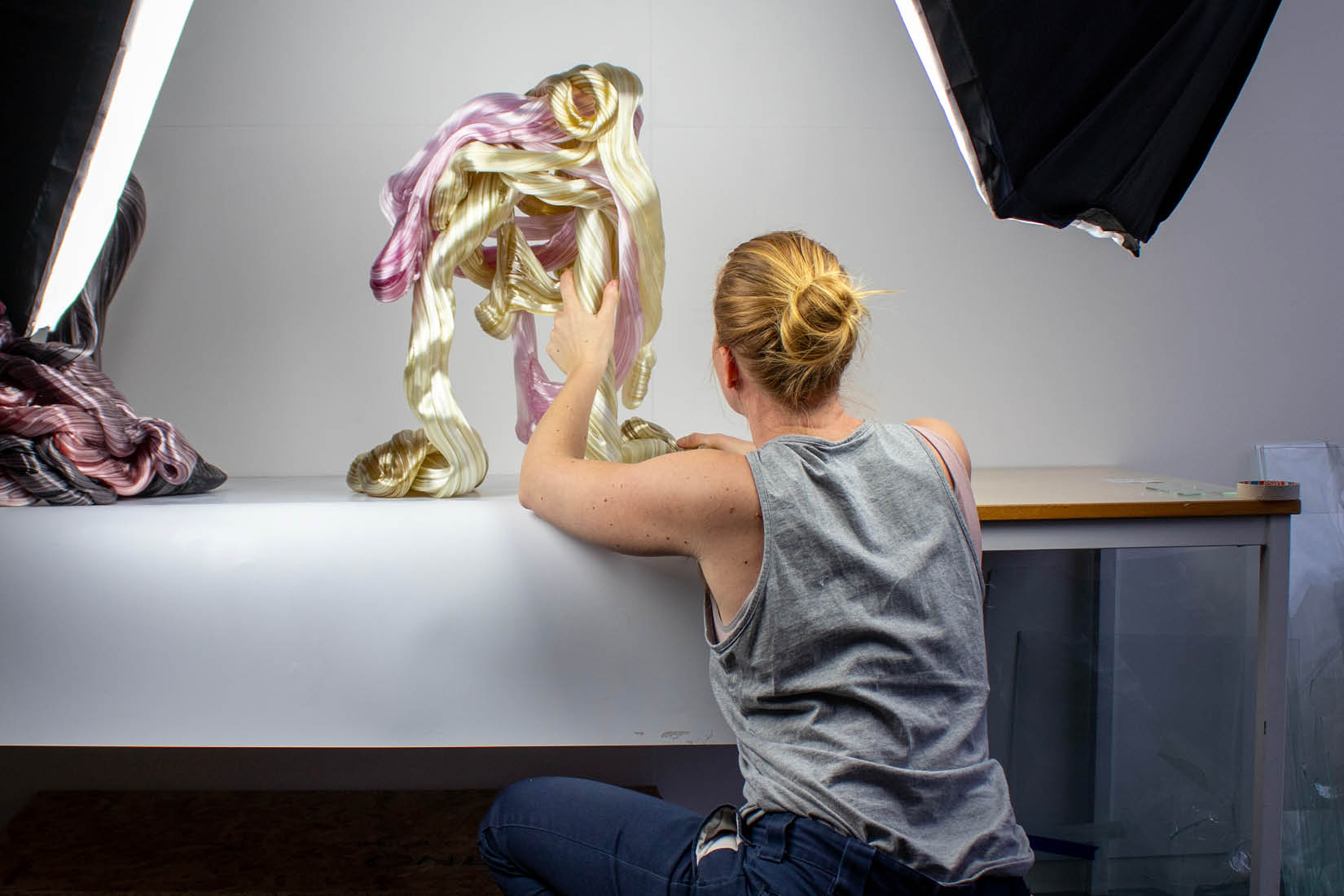The works of Maria Bang Espersen (born in 1981) have an immediate and powerful appeal. Of a totally new genre, they break away from conventions and defy expectations. For many years, Espersen has tirelessly explored new techniques and creative expressions, developing her own method that involves repeatedly stretching and folding the molten glass. Through this process, air is trapped between the glass strands, making it opaque and giving it a metallic sheen. She describes her work as a sort of experimental game. It requires her to work quickly and with total concentration – she needs to intervene before the glass cools – and the results are unpredictable. At the end, she removes the glass from the blowpipe and shapes it by hand. This is a crucial step, requiring rapid aesthetic choices and great flexibility. Unlike traditional glassblowing, which involves controlling the glass, her approach seeks to understand the material and to work with its whims. The balance between control and happenstance makes each sculpture unique and each session in the workshop a chance encounter.
Born and raised in Denmark, Maria Bang Espersen has lived and worked in Sweden for many years. She is a graduate of the Kosta Glass School and the Royal Danish Academy of Design in Bornholm. She also holds an MFA from the California Institute of the Arts and was a fellow in the Core Program at the Museum of Fine Arts in Houston, Texas. Over the past ten years, she has exhibited in many international museums, including the Smithsonian American Art Museum (Washington, D.C.), the Henry Moore Institute (Leeds, UK), the Toyama Glass Art Museum (Toyama, Japan) and the Finnish Glass Museum (Riihimäki, Finland). Her works feature in many major collections, including those of the Victoria and Albert Museum (London), the Corning Museum of Glass (New York) and the Rakusui-tei Museum of Art (Toyama). One of her pieces was selected to be the emblem of Révélations (International Biennial for Crafts and Design) in Paris in 2025.
